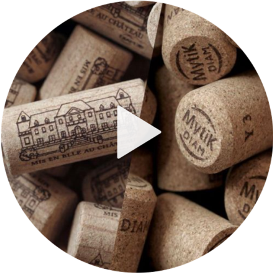A cork closure at the service of your wine

|
« Diam Bouchage designs, manufactures and markets technological cork closures for still wine, sparkling wine and spirits.
So much more than a simple stopper, the cork is the last oenological act of the winegrower. It must enable the wine to fully develop in the bottle throughout the ageing period and maintain the aromatic profile sought for a particular wine.
This is why the teams at Diam Bouchage work each and every day to ensure the quality of the company’s products in terms of mechanical performance, sensorial neutrality and oxygen control. »
Dominique Tourneix, C.E.O.
|
|
« Diam Bouchage designs, manufactures and markets technological cork closures.
As the last oenological act of the winegrower, the closure must enable the wine to fully develop in the bottle and maintain its aromatic profile.
Our teams work each and every day to ensure the quality of our products in terms of mechanical performance, sensorial neutrality and oxygen control. »
Dominique Tourneix, C.E.O.
|
Innovation at the heart of our expertise
|
Diam Bouchage has always been an innovative company; every year, it allocates a substantial budget to research and development.
In 2003, the company began investing in a revolutionary, patented process, called the DIAMANT® process that uses the properties of supercritical CO2 to extract the volatile compounds of cork and eradicate the molecules responsible for giving a taste to the wine, especially those causing “cork taint”.
Twelve years later, the company made yet another breakthrough in major technological progress with the launch of Origine by Diam®, a closure that reconciles science and nature, integrating a beeswax emulsion and binding agent composed of 100% plant-derived polyols.
|
|
Diam Bouchage allocates a substantial budget to research and development.
In 2003, its patented DIAMANT® process allows to extract the volatile compounds of cork and eradicate the molecules responsible for giving a taste to the wine, especially those causing “cork taint”.
In 2016, the company launches Origine by Diam®, a closure that reconciles science and nature, integrating a beeswax emulsion and binding agent composed of 100% plant-derived polyols.
|
Leading the world in technological cork closures
2.7
billons
closures sold
each year.
10 %
growth in value
during 2019/2020
590
employees
around the world
More than
16.000
active customers
80 %
sales are for
export

WE CARE ABOUT YOUR WINE
|
Diam Bouchage is a subsidiary of Oeneo, a group working in the world of wine through two divisions: winemaking (Seguin Moreau – Vivelys) and closures (Diam Bouchage).
.jpg) _175x110.jpg) 
|